Gwangneung Royal Tomb
in Namyangju City
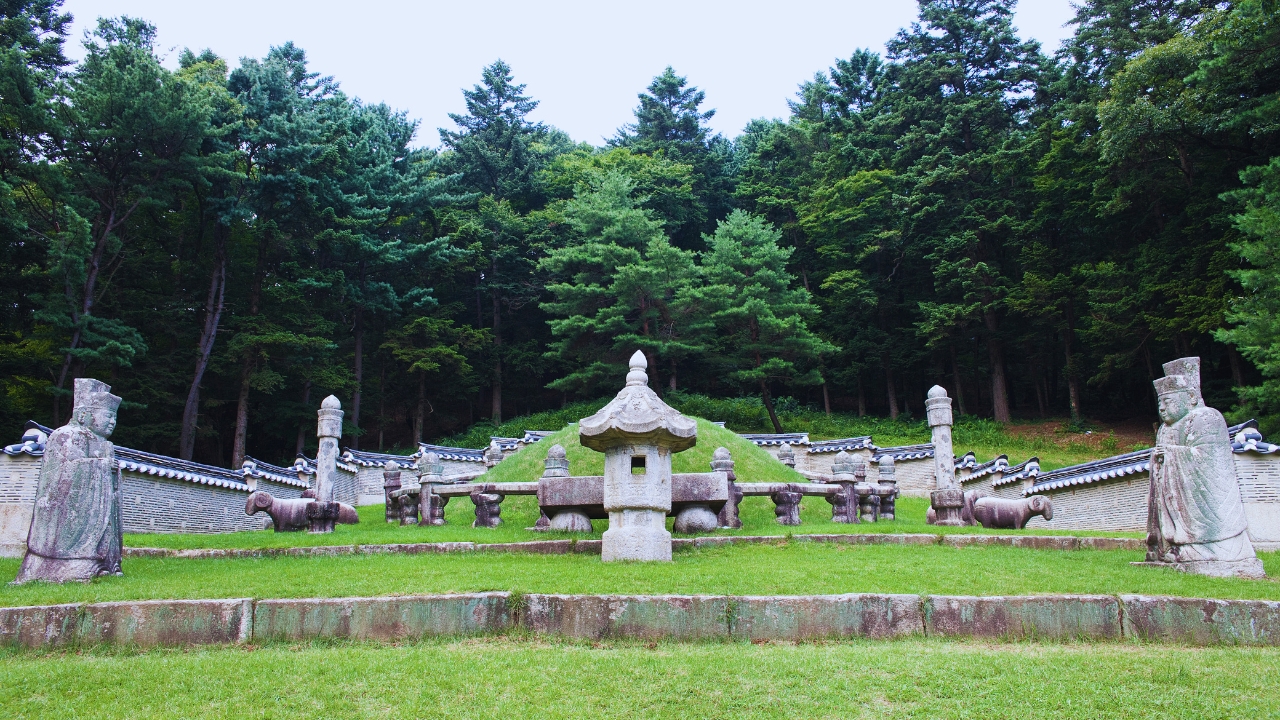 Gwangneung Royal Tomb in Namyangju City, Gyeonggi Province
Gwangneung Royal Tomb in Namyangju City, Gyeonggi ProvinceGwangneung Royal Tomb in Namyangju
Gwangneung Royal Tomb in Namyangju, South Korea, holds a rich historical significance.
Gwangneung is a significant royal tomb in the Joseon dynasty where King Sejo, the seventh king of Joseon, and Queen Jeonghui are buried.
King Sejo's reign was marked by several accomplishments, including military and land system reforms and abolishing the academic institute.
Gwangneung is unique in its design, with balustrades in stone surrounding the tomb and twelve zodiac animal deities engraved on the pillar of the balustrade.
The tomb also introduced a new method of arranging royal tombs called Dongwonigang, which became popular in the Joseon dynasty.
Let me delve into the details...
Historical Context
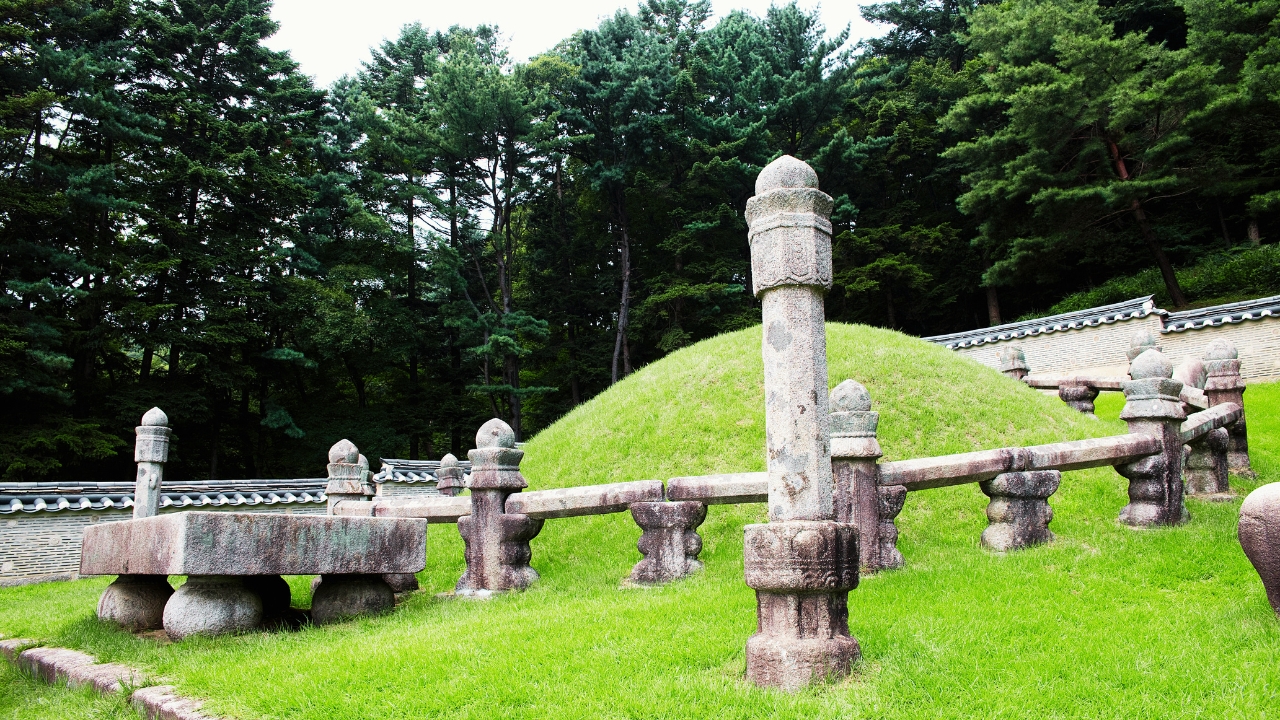 Rigthand-side view of Gwangneung Tomb
Rigthand-side view of Gwangneung TombGwangneung is a fascinating tomb complex in Namyangju, Gyeonggi Province, South Korea.
It is the final resting place of King Sejo (世祖), the 7th monarch of the Joseon Dynasty, and his consort, Queen Jeonghui (貞熹王后).
King Sejo ruled from 1455 to 1468, and his reign was marked by several reforms that aimed to strengthen the central government and curb the power of the aristocracy.
Apart from the tomb of King Sejo and Queen Jeonghui, Gwangneung also houses the Hwigyeongwon Royal Tomb, which is dedicated to the royal concubine Subi (綬妃) from the Bak family.
Subi was a gentle and well-behaved concubine of King Jeongjo, the 22nd King of the Joseon Dynasty. She was the birth mother of Prince Sunjo, who later became the 23rd King of the Joseon Dynasty.
The Hwigyeongwon Royal Tomb is a serene and peaceful place that reflects the beauty of the Joseon Dynasty's architecture and culture.
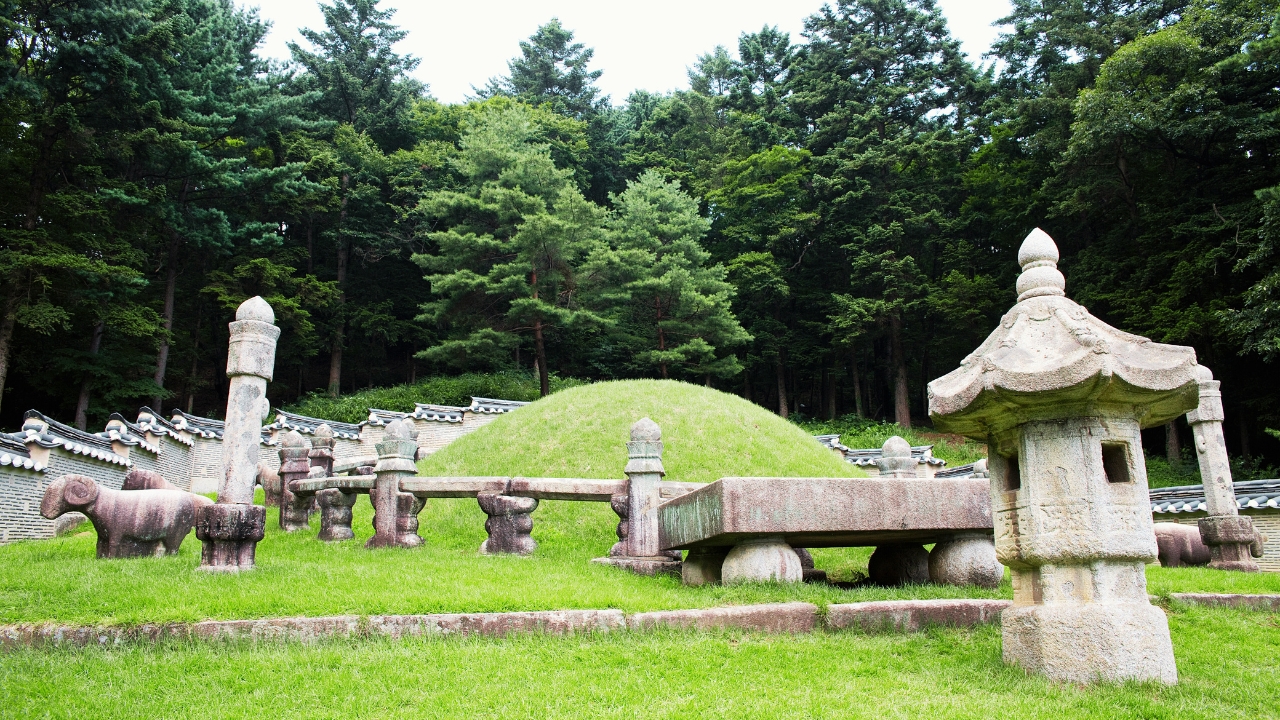 Gwangneung Royal Tomb in Namyangju - left-handside view
Gwangneung Royal Tomb in Namyangju - left-handside viewThe Yeongbinmyo Royal Tomb, located in the same complex, also honors the royal concubine Yeongbin (寧嬪) from the Gim family.
She served as a concubine during the reign of King Sukjong, the 19th King of the Joseon Dynasty.
The tomb is a testament to the Joseon Dynasty's royal culture and traditions, showcasing the artistry and craftsmanship of the era.
In other words, Gwangneung is an important historical site that offers a glimpse into the rich and fascinating culture of the Joseon Dynasty. It is a must-visit for anyone interested in Korean history and architecture.
Gwangneung's Beauty & Significance
 Gwangneung Royal Tomb in Namyangju
Gwangneung Royal Tomb in NamyangjuHidden deep within a verdant forest, the Gwangneung tomb complex is a true marvel. Its beauty, significance, and historical value have been preserved for centuries.
The tombs are awe-inspiring, but the unique location truly sets Gwangneung apart. The lush forest surrounding it only adds to its allure, making it a magical and enchanting place to visit.
Among all the Joseon Tomb locations, Gwangneung is undoubtedly one of the most beautiful, and it's a place that everyone should experience at least once in their lifetime.
Recent Status
The Gwangneung Royal Tomb is in Namyangju, Gyeonggi Province, South Korea. It is one of the 18 royal tombs of the Joseon Dynasty, the last dynasty in Korea that ruled from 1392 to 1910.
The tomb complex consists of three tombs, including the tomb of King Sejo (1417-1468), his consort, Queen Jeonghui (1418-1483), and another consort, Queen Jeonghyeon (1440-1522).
The Gwangneung Royal Tomb in Namyangju is known for its beautiful and peaceful surroundings, perfect for strolling and enjoying nature.
The tomb complex is in a forested area and features several walking trails offering stunning views of the surrounding mountains and valleys.
Visitors can see various stone sculptures along the trails, including a pair of stone sheep symbolizing the King and queen's guardians in the afterlife.
The tomb complex also includes a museum that houses a collection of artifacts and exhibits related to the Joseon Dynasty.
Visitors can learn about the dynasty's history and culture as well as the architecture and construction of the royal tombs.
Overall, the Gwangneung Royal Tomb is a fascinating cultural heritage site that offers visitors a glimpse into Korea's rich history and culture.
It is a must-visit attraction if you are interested in Korean history or looking for a peaceful escape from the hustle and bustle of city life.
If you ever visit, take a moment to appreciate the serene surroundings and the stories etched into these ancient tombs. 🌳🏛️
Architectural Elements
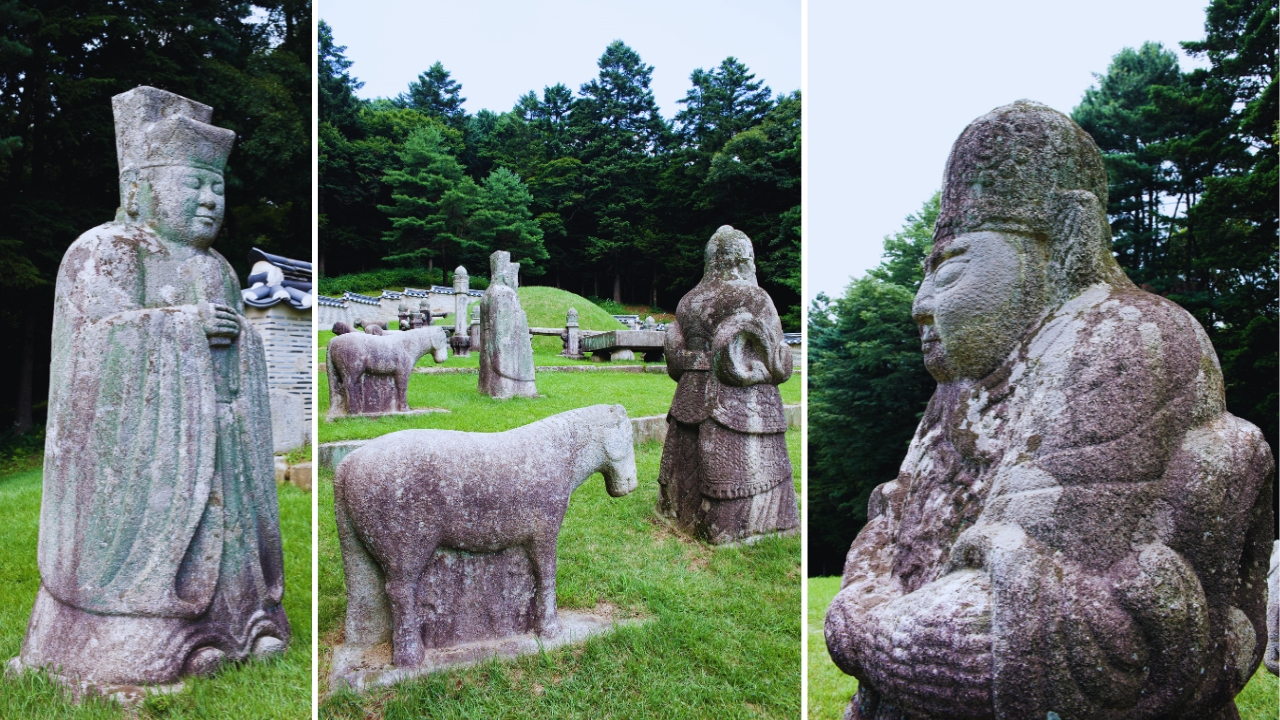 Gwangneung Royal Tomb in Namyangju - Sculptures of Guardians and Animals are part of royal tomb arrangements
Gwangneung Royal Tomb in Namyangju - Sculptures of Guardians and Animals are part of royal tomb arrangementsThe Gwangneung Royal Tomb, situated in Namyangju, South Korea, boasts a captivating architectural design that reflects the grandeur of the Joseon Dynasty.
Here are the main features of the Gwangneung tomb complex...
Youth and Arrangement: The tomb complex comprises three main tombs: King Sejo's, Queen Jeonghui's, and the Hwigyeongwon Royal Tomb dedicated to the royal concubine Subi.
These tombs are enshrined separately and face each other from two hilltops.
The entire area surrounding the tombs is a lush forest meticulously preserved over the years, contributing to the site's natural beauty and abundance of wildlife.
Architectural Elements: The tombs are constructed as earthen mounds, blending harmoniously with the landscape.
These mounds symbolize the eternal resting place of royalty. Each tomb features stone markers placed at strategic points, serving as boundary delineations and adorned with inscriptions detailing the occupants' titles and achievements.
Leading to the tombs, spirit paths guide ancestral spirits during ceremonial rituals.
Stone lanterns flank these paths and maintain the connection between the living and the deceased. Surrounding the mounds, tomb walls provide structural support and protect the tombs.
They are made of stone and contribute to the overall aesthetics. Adjacent to the tombs, sacrificial buildings were used for ancestral rites.
These structures are simple and elegant, emphasizing the site's spiritual significance.
Symbolism and Harmony: The architecture of Gwangneung embodies the Confucian ideals of harmony with nature and filial piety.
The tombs' placement within the forest reflects the belief in maintaining a balance between human existence and the natural world.
The simplicity and symmetry of the design evoke a sense of solemnity and reverence for the departed rulers.
The Gwangneung Royal Tomb in Namyangju attests to the Joseon Dynasty's architectural prowess, blending earthly elements with spiritual symbolism in a serene and picturesque setting. 🏛️🌳
Getting to Gwangneung Royal Tomb in Namyangju
There are a few choices for getting to Gwangneung Royal Tomb. Here are a couple of them...
To get to Gwangneung Royal Tomb in Namyangju from Seoul by public transport, you can take the subway to Hoeryong Station (Line 1) and then transfer by bus to Gwangneung.
Alternatively, you can take a bus from Dong Seoul Bus Terminal to Gwangneung. Both options take approximately 1.5 to 2 hours, depending on traffic and your transportation mode.
Another way...
After arriving at Cheongnyangni Station (Seoul Subway Line 1), take bus No. 707 from Gwangneungnae Terminal (광릉내종점) Bus Stop and transfer to bus No. 21 to get off at Gwangneung (광릉) Bus Stop.
Thanks so much for reading. Please Like or Share if you feel this is useful.
Have a fruitful travel!
- Home
- Historical Attractions
- Gwangneung Royal Tomb In Namyangju
Get Exciting Activities
Book one of our exciting activities today to experience the thrill of a lifetime! Take advantage of this opportunity and secure your spot in advance.
Hotel Map Guide
Find your affordable, accessible, and comfortable hotel in Seoul at Agoda.Com. See the hotel map below...
Hotel Booking Guide
Find affordable and amazing hotels on Agoda.com using the search box below. Book now to enjoy great discounts and save!
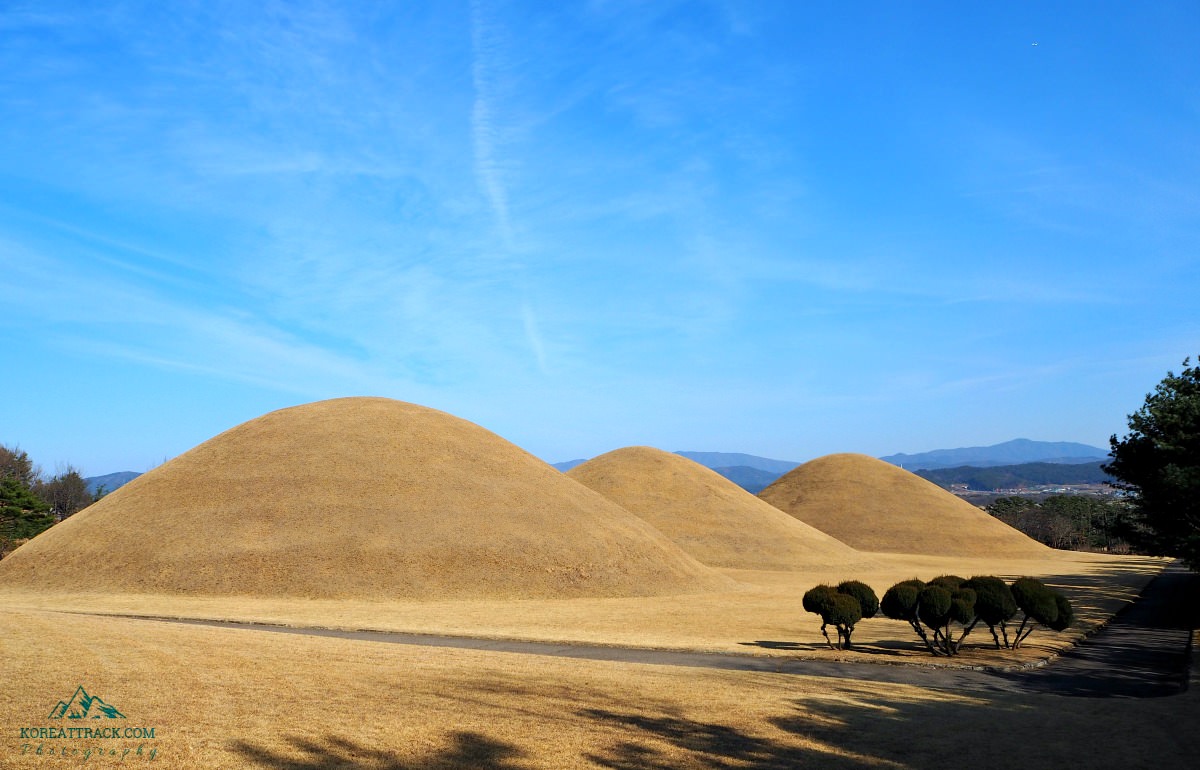
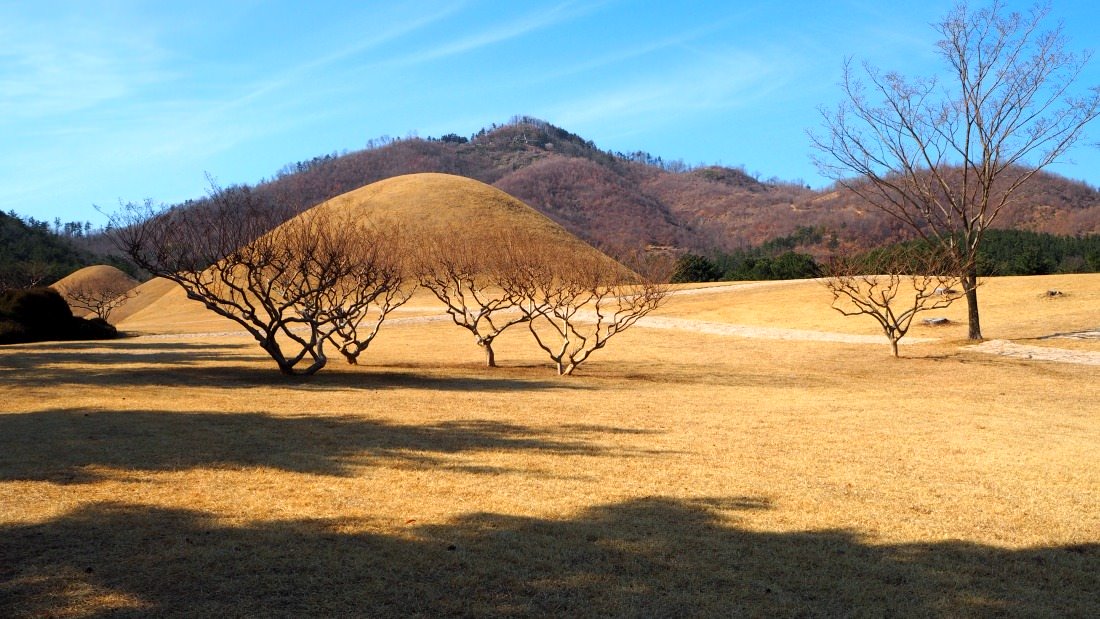





New! Comments
What do you think about this page? Leave me a comment in the box below.